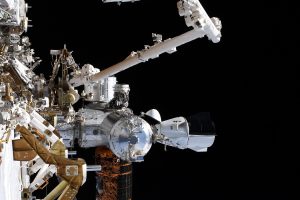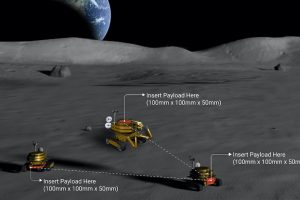Testing of the craft, which began at the end of January, has now completed says Nasa. Particularly, it has been tested for its ability to function in the Red Planet’s hostile environment,
To this end the helicopter has been demonstrating that it can survive in extreme cold as nights on Mars can be as cold as -130°F (-90°C).
Bound for Mars
After arriving in February 2021 as part of the Mars 2020 rover mission, the machine is due to be deployed later in the year with test flights of up to 90 seconds.
“Gearing up for that first flight on Mars, we have logged over 75 minutes of flying time with an engineering model, which was a close approximation of our helicopter,” said MiMi Aung, project manager for the Mars Helicopter at Nasa’s Jet Propulsion Laboratory (JPL) in Pasadena, California. “But this recent test of the flight model was the real deal. This is our helicopter bound for Mars. We needed to see that it worked as advertised.”
The Martian atmosphere is only about one percent the density of Earth’s,” said Aung. “Our test flights could have similar atmospheric density here on Earth – if you put your airfield 100,000 feet (30,480 meters) up. So you can’t go somewhere and find that. You have to make it.”
Mars Helicopter simulator
The Mars Helicopter team used a space simulator at the JPL to create a vacuum before replacing the air with carbon dioxide – the major component of the atmosphere on Mars. Team members then used a ‘gravity offload system’ to reduce the gravity equivalent by about two-thirds, again simulating conditions on the planet.
We only required a 2-inch (5-centimeter) hover to obtain all the data sets needed to confirm that our Mars helicopter flies autonomously as designed in a thin Mars-like atmosphere; there was no need to go higher. It was a heck of a first flight,” said Teddy Tzanetos, test conductor for the Mars Helicopter at JPL.
The helicopter’s components number “more than 1,500 individual pieces of carbon fiber, flight-grade aluminum, silicon, copper, foil and foam”, and all operated, proving that the machine was ready for service. “The next time we fly, we fly on Mars,” said Aung.
The Mars Helicopter, which weighs 1.8kg, will launch as a technology demonstrator with the Mars 2020 rover in July 2020 from Cape Canaveral Air Force Station, Florida, said Nasa.
Image: NASA/JPL-Caltech
[Via New Atlas]
Sue Proud
 Electronics Weekly Electronics Design & Components Tech News
Electronics Weekly Electronics Design & Components Tech News





